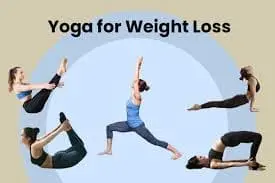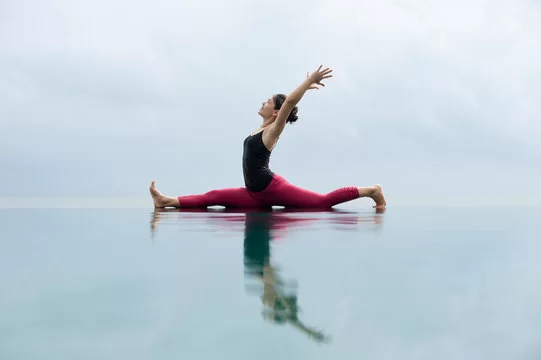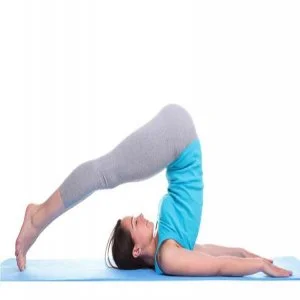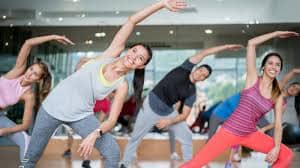Janu Sirsasana (Head to Knee Pose)
Janu Sirsasana, commonly known as the Head-to-Knee Pose, is a classic seated forward bend in yoga that offers numerous physical and mental benefits. This pose involves stretching the spine, hamstrings, and shoulders while promoting flexibility and relaxation.
The Sanskrit terms “knee,” “head,” and “posture,” “janu,” “sirsa,” and “asana,” respectively, are the origin of the name. In this forward-folding position, the upper body bends from the hips, bringing the head closer to the knee. This position opens the hamstrings and is regarded as a great hip opener.
Because it may be used to create other modifications, Janu Sirsasana is regarded as a basic position.
What is Janu Sirsasana (Head-to-Knee Pose)?
Head-to-Knee Pose, also known as Janu Sirsasana, is a common sitting-forward bend in yoga. The Sanskrit terms “janu,” which means knee, and “sirsa,” which means head, are the sources of its name. This posture engages the core and encourages relaxation while providing a deep stretch to the back of the body, especially the hamstrings, calves, and lower back.
Because of its many physical and mental advantages, Janu Sirsasana is frequently incorporated into yoga sequences. On a physical level, it lengthens the hamstrings, promotes digestion, and increases spine and leg flexibility. Additionally, the position improves the functions of the liver and kidneys by stimulating them. Furthermore, Janu Sirsasana might be therapeutic for minor backaches and ease lower back strain.
Which muscles are used in janu Sirsasana (Head-to-Knee Pose)?
- Hamstrings
- erector spinae
- quadratus lumborum
- gastrocnemius
- soleus
- Quadriceps
- Hip Flexors
- Core Muscles
- Shoulder Muscles
Benefits of janu Sirsasana (Head-to-Knee Pose)
- It can cure sinusitis.
- Enhances digestion.
- It helps to reduce abdominal fat.
- Stimulates the kidneys and liver.
- Effectively strengthens rib bones.
- Relieves symptoms of menopause.
- Relieves aches in the waist and legs.
- The pose also makes the spine flexible.
- It relieves mild sadness and calms the mind.
- The pose is beneficial for both high blood pressure and insomnia.
How to do JanuSirsasana (Step-by-Step)?
- Place your legs out in front of you while sitting in Dandasana, also known as Staff Pose.
- Place your right foot against your left inner thigh while bending your right knee and letting it drop.
- Lengthen your spine, lift your arms to either side of your head, flex your left foot, and press the top of your leg down as you inhale.
- As you exhale, fold forward from the hips after slightly rotating your upper body to face your left leg.
- Maintain a long spine, an open chest, and relaxed shoulders.
- Hold your ankle or foot, or place your hands down so they frame your left leg.
- Hold on for five to ten breaths.
- As you exit the posture, take a deep breath.
Janu Sirsasana video:
What are the Beginners’ Tips Janu Sirsasana (Head-to-Knee Pose)?
- If you have trouble tilting your pelvis forward, sit up straight on a cushion or folded blanket. Instead of collapsing forward when you sit, try to keep your spine long.
- To keep your spine long when folding forward, wrap a strap around the ball of your foot. However, don’t pull too hard.
- Bend your knee to the extent necessary to fold from the hips.
Modifications and Props
You can use the following supports to alleviate the difficulty of turning forward in Janu Sirsasana:
Blanket – The asana is performed with a folded blanket seated beneath the hips. It minimizes the pelvis’ forward tendency and prevents the lower back from folding when turned forward.
Yoga strap – Wrap a yoga belt around the stretched foot’s balls and hold onto it while you face forward. It increases the range of motion of the hamstring muscles while lengthening the spine.
Cushion – Under the bowed leg, place a padded blanket. It will make a mild touch with the knees on the ground floor and support the ankle and knee.
Janu Sirsasana Variations
If your hands extend past your foot, use your left hand to grasp the right wrist and tie it around your left foot.
Increase the angle between the two legs to deepen this position. To achieve this, bend the knee further back.
In a Yin yoga class, you will see a similar stance. The name Half-Butterfly refers to yin yoga. The distinction is that in Yin yoga, the researcher relaxes into the pose instead of using force to turn forward. As a result, the legs are relaxed and the back is softer and more round. Each position is held for three to five minutes while teaching yin yoga.
Contraindications of Janu Sirsasana
- Asthma
- Diarrhea
- Knee injury
- Lower back injury
- Lumbar disc herniation
Conclusion
Head-to-knee, or Janushirshasana, is a forward-bending yoga position. It has several benefits, including strengthening and stretching the muscles in the abdomen and spine. You can even practice this stance to manage gastritis, diabetes, and irritable bowel syndrome. In any case, please see a doctor if you experience any back or abdominal pain while performing Janu Shirshasana.
FAQs
What is Janu Sirsasana good for?
improves the flow of blood around the pelvis. lengthens and fortifies the back and spine. has therapeutic benefits for fatigue, sadness, stress, and lower back discomfort. Contains the pancreas, liver, spleen, kidneys, and groin.
Who should avoid Janu Sirsasana?
Janu Sirsasana should not be performed by anyone with a hernia, sciatica, hamstring injury, or slipped disc. Be extremely cautious and take your time practicing if you have knee or back pain. Because the posture puts additional pressure on the belly, people who have diarrhea, asthma, or stomach ulcers should also avoid it.
What is another name for Janu Sirsasana?
Learn how to perform Janu Sirsasana, or head-to-knee pose, with Liforme’s professional alignment advice. For runners, this hamstring stretch is fantastic.
What is the meaning of Janushirasana?
A series of asymmetrical seated forward turns is known as Janu Sirsasana. Sanskrit terms for “pose,” “head,” and “knee” are Asana, Sirsa, and Janu. By folding the body, the stance aims to bring the head closer to the knee.
What are the variations of Janu Sirsasana?
With your right hand in front of you amid your legs, your left hand behind your left buttock, and your fingertips on the floor, rotate your chest toward the bent knee. As you inhale, lift the sides of your waist and the bottom of your abdomen by pressing your fingertips into the ground floor. Exhale and turn to the left.
What are the limitations of Janu Sirsasana?
Janu Sirsasana should not be performed by someone who has asthma. This position should not be performed if you have diarrhea. When performing Janu Sirsasana, flex your knee completely to prevent hurting an injured knee. If you have a lumbar disc herniation or a lower back problem, don’t do it.
References:
- EkhartYoga. (2020, November 6). Head to Knee Pose – Ekhart Yoga. Ekhart Yoga. https://www.ekhartyoga.com/resources/yoga-poses/head-to-knee-pose
- Head On Knee Pose Yoga (Janu Sirsasana) | Yoga Sequences, Benefits, Variations, and Sanskrit Pronunciation | Tummee.com. (2017, October 15). Tummee.com. https://www.tummee.com/yoga-poses/janu-sirsasana
- Janu Sirsasana (Head-to-Knee Pose). (n.d.). MyYogaTeacher. https://myyogateacher.com/yoga-asana/janusirsasana
- JanviMangukiya, J. (2024b, October 10). Janu Sirsasana (Head-to-Knee Pose) – Steps, Benefits, Variations. Mobile Physiotherapy Clinic. https://mobilephysiotherapyclinic.in/janu-sirsasana-head-to-knee-pose/
- Shvasa Editorial Team. (2022, August 23). How to Practice Janu Sirsasana. https://www.shvasa.com/yoga-blog/how-to-practice-janu-shirsasana-head-to-knee-pose-steps-benefits-and-contraindicationsCopy







